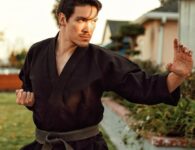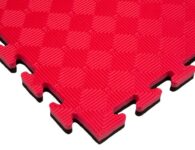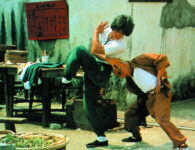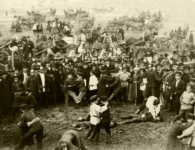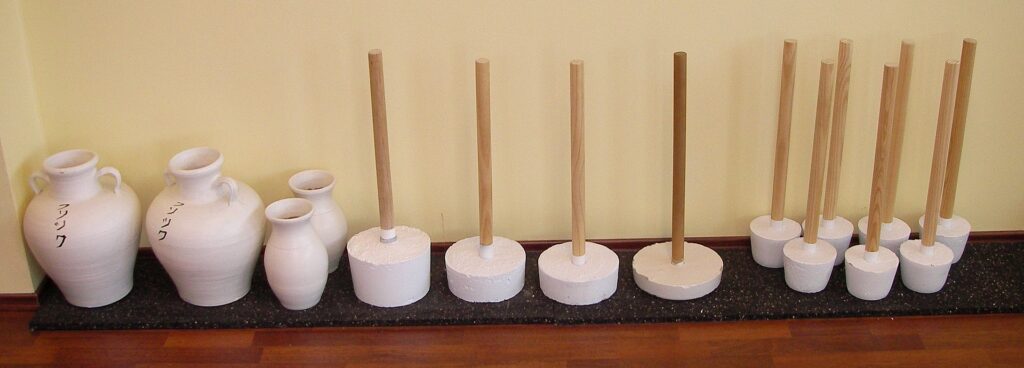
If #StayHome training was a martial art, most of us would be earning our first stripes in it right about now. We’re still fairly new to our routines, home gym setups, and solo training techniques, but we’re learning. We’re starting to wrap our heads around the concept. We’re grasping the basics. We’re getting better at it. And we’re learning more every day.
Here at the AWMA Blog, we’ve been building an arsenal of practical and philosophical martial arts training tips to help us all face this strange new challenge in our martial arts journeys. We’re collecting exercises and solo martial arts drills. We’re gaining wisdom and inspiration from other members of our martial arts community. And we’re looking at the best training equipment and martial arts gear for our new — or growing — home gyms. This week, we’re going to explore another potential addition to our home dojos: the chi-ishi.
Let’s take a look at how to train with this traditional Karate tool — and how to make your own chi-ishi.
What is a Chi-ishi?
Like the Makiwara, the chi-ishi is a tool that was developed for hojo undō (or “supplementary exercises”) in Japanese and Okinawan martial arts. It is still used in some traditional Karate schools today. While the Makiwara is a tool that martial artists use to develop their technique, though, the chi-ishi is part of a group of weighted items that were designed to improve a martial artist’s strength, grip, and conditioning. Traditional martial artists used this equipment much like some MMA fighters and modern martial artists use functional fitness and weights for cross-training today.
Each weighted hojo undō item has its own unique design and specific purpose. A chi ishi (“strength stone” or “power stone”) is concrete weight that is attached to the end of a wooden pole. Performing kata or other techniques while holding the chi-ishi develops a martial artist’s strength in their fingers, hands, arms, chest, and shoulders.
Who Should Use a Chi-ishi?
According to lifelong Karate practitioner and writer Chris Denwood, the chi-ishi is predominantly used in the traditional Okinawan style of Karate called Gōjū-ryū (or “hard-soft style”). It is also found in some other forms of Ko-ryū Karate.
When used with great awareness, and careful attention to form and detail, the chi-ishi remains a valuable tool for martial artists who are interested in sports-specific training.
“Even with a plethora of traditional and more contemporary tools available today, the unique design and qualities of the chi-ishi can be used to play a key role in building the karate body,” Denwood writes. “No more advanced than a stick with a weight attached to one end, the asymmetrical nature of the chi-ishi is what provides its most challenging asset. Even to manipulate the weight to an adequate level of control takes a high degree of body awareness, proprioception and core integration. But it is often the subtleties of such exercises, the things going on underneath the surface, which provide the most benefit.
“Simply swinging the tool around for the sake of being able to claim that you ‘practice hojo undō’ simply doesn’t do the chi-ishi any justice and even though there are other pieces of training equipment around that can provide similar attributes, the classic saying that ‘a poor craftsman will always blame his tools’ is true for everything you place in your hand. So how we understand the performance of hojo undō and in particular, how the exercises we repetitively undertake connect with our karate practice is of chief importance – not necessarily how many reps we can push out!”
Alternatives to the Chi-shi
Given the specific design of this piece of martial arts equipment, and the specific nature and purpose of its training, anyone who wants to do proper chi-ishi training should train with a chi-ishi. The general ideas and principles of this type of training can be applied to other pieces of martial arts gear and other martial arts disciplines, though. Kettlebell and club training also use asymmetrically-shaped weights to challenge and develop the core and stabilizing muscles during strength and conditioning workouts. Both systems have great cross-training potential for martial arts. Adding weight to technique training in order to foster greater body awareness and/or develop strength is also a common practice in many martial arts and martial arts-inspired workouts. Adding boxing gloves to a cardio kickboxing class, or doing combos with weighted gloves in boxing and mixed martial arts training are examples of this type of training.
How to Use a Chi-ishi
Start slowly. Study chi-ishi techniques and familiarize yourself with the proper form and the philosophy behind each move before you start swinging. Once your mind and body are prepared to tackle the chi-ishi, you can begin to incorporate this hojo undō tool into your Karate practice.
If your learning style favors written instructions and diagrams, this blog post is a good resource for beginner’s chi-shi techniques. If you learn better through audio and visual cues, training videos are available:
How to Build Your Own Chi-ishi
To build a chi-ishi for Karate training, you will need an 18 inch wooden dowel, 4 one inch screws, a bag of quick dry cement, a saw, a screwdriver, and water. You will also need a mold for each chi-ishi that you plan to make. Plastic food containers for takeout soup, margarine, and Cool Whip are all easy and affordable options.
Here’s a video to walk you through the basics of chi-ishi making. (And here’s a set of written instructions if they work better for your learning style.)
Looking for more at home training ideas? Check out our blog posts:
- At-Home Workouts: 7 Types of Cardio Training You Can Do At Home
- Solo Martial Arts Drills You Can Do At Home
- Four Boxing Drills You Can Practice at Home With No Sparring Partner
- 5 Workouts You Can Do in the Comfort of Your Own Home
- How to Spar With Your Mattress and Other Home Workout Tips From MMA Fighters
- Martial Arts Training At Home: How To Build and Use Your Own Makiwara
- How To Train With A Focus Mitt Stand
- Training at Home: Checking in With Some of AWMA’s Favorite Martial Artists





